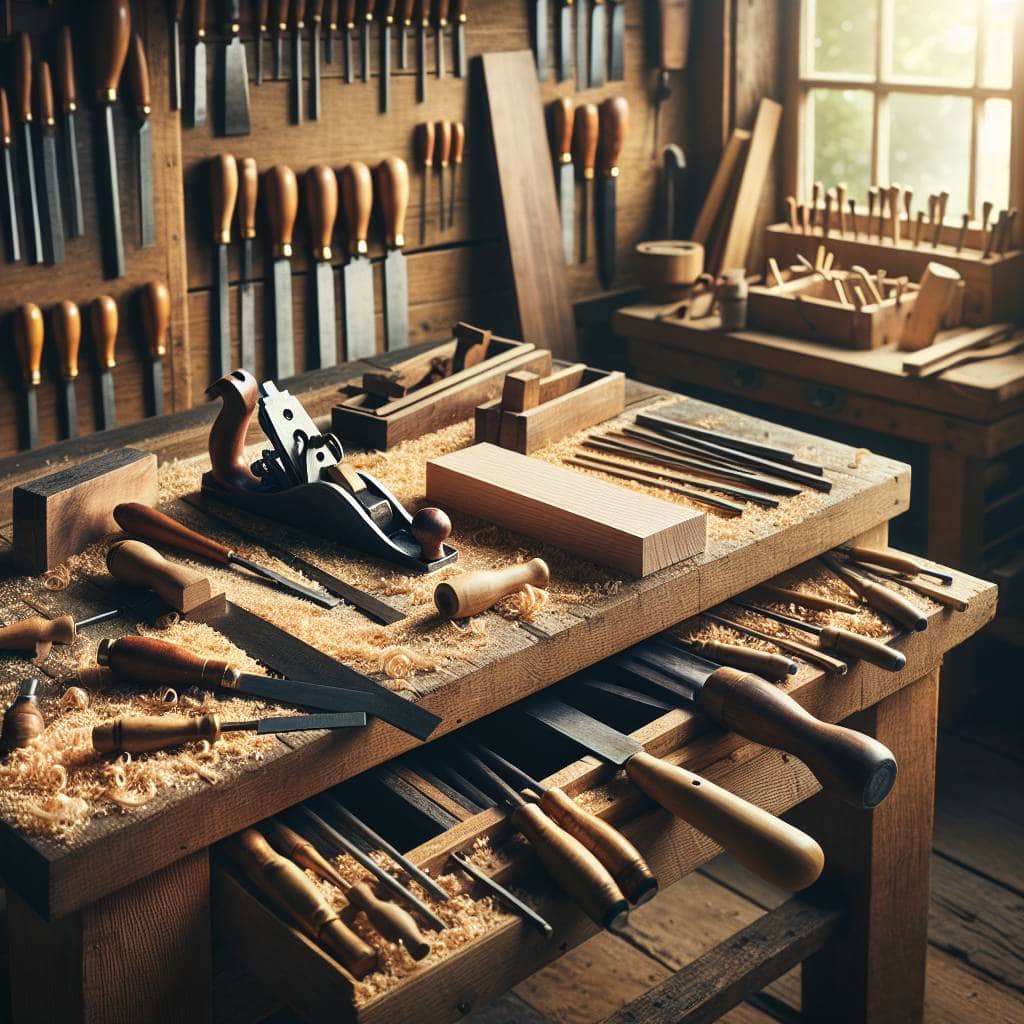I remember the first time I laid my hands on a piece of lumber, thinking I’d craft something grand, like a rocking chair or a coffee table. What I ended up with was a roughly hacked block of wood that looked more like a misshapen doorstop than anything functional. Let me tell you, nothing humbles you quite like realizing your masterpiece is only fit for propping open a barn door. But hey, they say failure’s the best teacher, and I’ve had plenty of classes in this school of hard knocks. If you’re fresh to woodworking, brace yourself for a journey filled with more splinters and crooked cuts than you’d care to admit.

Now, don’t go thinking this is all doom and gloom. There’s beauty in the struggle, and I’m here to guide you through it. Whether it’s understanding the basics of joinery, picking the right tools that won’t break the bank, or choosing the perfect wood for that first project, we’re going to break it down together. So roll up your sleeves, grab your sandpaper, and let’s turn that hunk of wood into something you’d proudly show off. No promises it’ll be easy, but it sure will be worth it.
Table of Contents
Decoding the Mysteries of Joinery: Surviving My First Project with All Fingers Intact
When I first picked up a piece of timber and decided to turn it into something more than firewood, I felt like a kid who’d been handed his first set of tools. Joinery, though—now that’s where the real magic happens. Imagine this: you’ve got two pieces of wood, and you’re tasked with making them one. No nails, no screws—just pure, unadulterated craftsmanship. Sounds mystical, doesn’t it? But before you think it’s some kind of wizardry reserved for the ancient masters, let me assure you, it’s more about patience, precision, and a willingness to occasionally swear at your mistakes.
I’ll tell you, my first go at joinery was an adventure. Picture me hunched over my workbench, squinting at a dovetail joint like it was a complex puzzle. I was armed with a chisel and a mallet, hoping to coax my pieces of wood into a harmonious union. My fingers were not just players in this drama—they were the stars, and keeping them intact was the primary goal. As I chipped away, I realized that joinery isn’t just about fitting pieces together; it’s about learning to work with the wood, respecting its grain, and understanding its quirks. And when you finally get it right, when those two pieces snap together just so, there’s a satisfaction that no store-bought furniture can offer.
I learned quickly that woodworking isn’t a race. It’s a slow dance with the material. You need the right tools—a trusty saw, a dependable chisel, and sometimes a plane to smooth out the rough patches. Choosing the right wood is just as crucial. Each type has its personality—oak is stubborn but rewarding, while pine is forgiving but sometimes too soft for intricate work. As I wrapped up my first project, fingers intact and a newfound respect for the craft, I realized that joinery is like learning to play an instrument. It takes time, practice, and a good sense of humor when things go awry. But trust me, the journey is worth every splinter.
Sawdust and Stubbornness
Starting with woodworking is like making friends with a stubborn mule. Get the basics right—learn your joinery, choose the right wood, and pick your tools wisely. Your first project will test your patience more than your skills, but that’s where the real learning kicks in.
Hammers, Nails, and Wisdom Gained
So here I am, hands a little worse for wear, but heart full of pride. Tackling this woodworking journey wasn’t just about cutting and joining pieces of wood. It was about joining together bits of knowledge, patience, and a healthy dose of humility. You see, wood has a way of teaching you things you didn’t even know you needed to learn. Like how a stubborn nail can teach you patience, or how a warped board can make you rethink your whole strategy. Each mistake was a lesson, each success a small victory. And let me tell you, those victories feel as sweet as the smell of fresh-cut timber.
By the end of my first project, I realized something important. It’s not just about the finished piece sitting in your garage or proudly displayed in your living room. It’s about the journey. The moments spent choosing the right piece of wood, figuring out which tool won’t bite back, and the satisfaction of each joint fitting snugly in its place. Sure, my project isn’t going to win any awards, but it’s mine. And if there’s one thing I’ve learned, it’s that creating something with your own two hands—even if it’s a bit rough around the edges—is a reward in itself. So here’s to more splinters, more learning, and more projects that remind me why I love this craft.